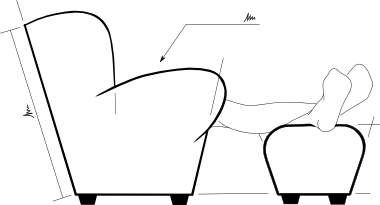Staying on track
Here’s a quick look at the front axle connection to the chassis and the steering geometry.
The axle tube is a single piece of stock aluminium tube, 2 inch outer diameter (50.8mm), with 1.63mm thick walls in 6061-T6. All that is needed to change the tube into an axle is two bends (on a pipe bender) and some notches to locate the adjoining parts.
A semicircular cutout in the sill tube locates the axle tube and transmits the vertical load from the front wheels to the rest of the chassis. The cut in the sill tube is not quite a full semicircle though; to make sure that the sills are correctly aligned, a flat top to the semicircle cut locates into a pair of notches in the axle tube.
The notch in the tube will provide some resistance to stop the round axle tube from rotating when the axle tube is loaded in torsion (e.g. during braking), but the thin line of adhesive over half the circumference will not hold the axle fully in place. To do this properly, the folded bracket underneath clamps the axle tube up to the sill. Where the top edge of the axle tube has only the thickness of the sill wall for adhesion, the front axle bracket provides full contact to the bottom half of the axle tube. This not only provides a great enough bond area in shear to resist the braking torsion in the front axle, but also stops the axle from falling out from the sill, and provides the curved form at the front edge of the sill to shape the cover panel.
The steering knuckle and upright are both cut from 1 inch thick aluminium plate. In my quest to have parts that do not need complex machining, these are the parts that have been most difficult to design so far. In the end, I’ve had to settle for having the holes drilled after the parts are cut from plate, but I’ve tried to make that process as simple as possible: so the kingpin and wheel axle holes can be drilled without any additional clamps or jigs, and the holes are perpendicular to the faces they pass through.
The clearance between the steering knuckle (the piece that doesn’t move) and the steering upright (the part that moves) is very small. I’m using flanged bushings for the pivot instead of the more traditional roller bearings. While plain bearings will have slightly more friction than rollers, less than 0.5 Nm of torque is required to overcome friction in this arrangement. With the 5:1 reduction in steering ratio, that torque is less that 0.1 Nm at the controls; a negligible amount, especially considering that there is no need to balance using the steering, like at slow speed on a bike.
Just to note that the steering knuckle and upright aren’t quite finished yet. As you can see, the brackets for the steering cables, brake mounting points and an extra plate to spread the bearing load still need to be included. As with the current pieces, these will be cut from stock, and attach with the structural epoxy.
If you’re interested in the steering geometry:
-
Wheel Camber: 10 deg
-
Caster angle: 16 deg
-
Trail: 100mm (~4”)
-
Kingpin inclination angle: 25 deg

